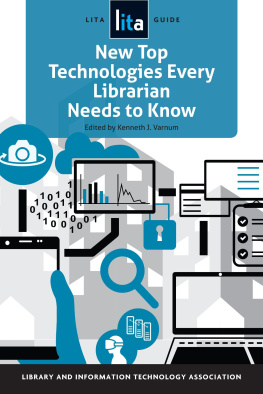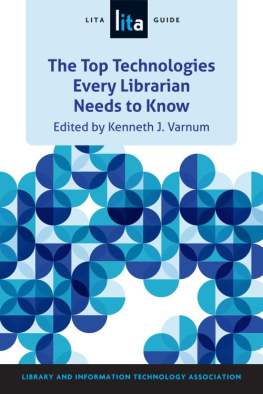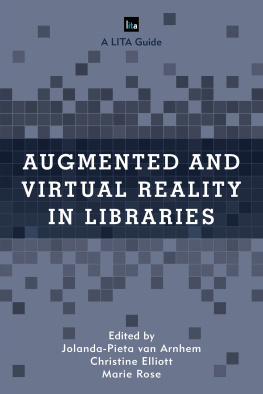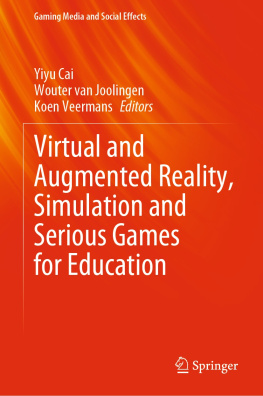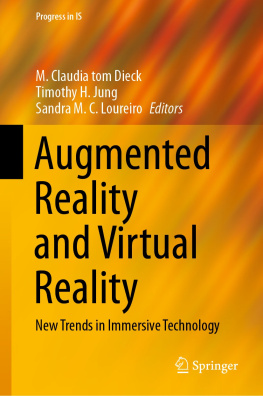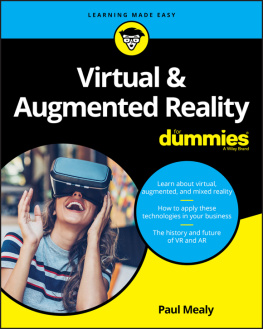
ALA Editions purchases fund advocacy, awareness, and accreditation programs for library professionals worldwide.
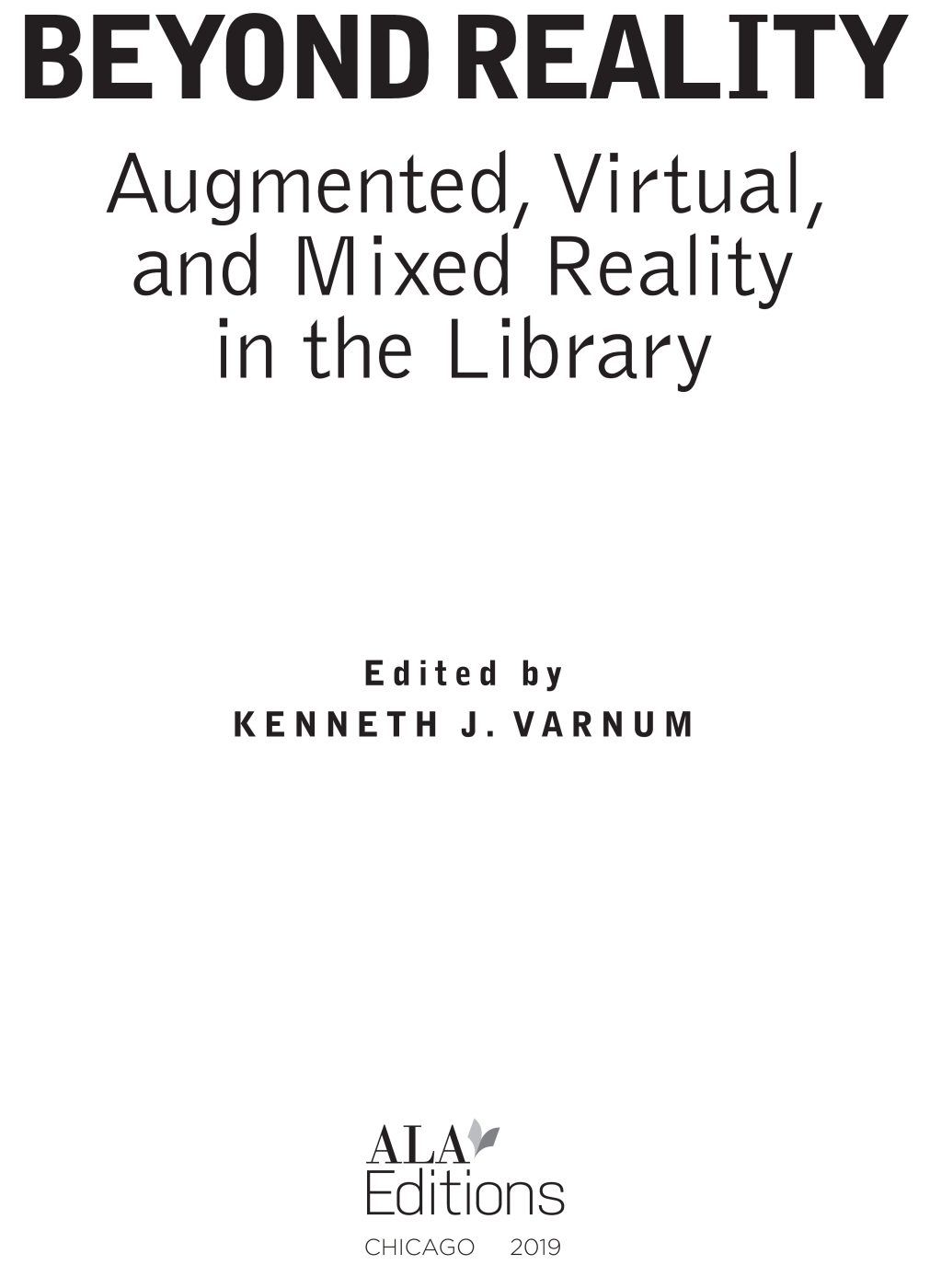
KENNETH J. VARNUM is senior program manager at the University of Michigan Library. In this role, he is responsible for the librarys discovery systems, document delivery and link resolver interfaces, and the librarys evolving and emerging analytics infrastructure. Over his two decades working with public-facing technology in academic, corporate, and special libraries, he has gained a deep appreciation and understanding of the need to tailor systems and interfaces to the local user base. A frequent speaker and author, Varnum presents and writes about discovery systems, library analytics, and technology. In addition to numerous articles and chapters, he wrote Drupal in Libraries (2012), compiled the LITA Guide The Top Technologies Every Librarian Needs to Know (2014), and edited Exploring Discovery: The Front Door to Your Librarys Licensed and Digitized Content (2016). He also edited Lorcan Dempseys The Network Reshapes the Library (2014). Varnum received his masters degrees from the University of Michigans School of Information and its Center for Russian and East European Studies, and his bachelor of arts degree from Grinnell College. You can contact him through his website at https://www.varnum.org/ or on Twitter at @varnum.
2019 by the American Library Association
Extensive effort has gone into ensuring the reliability of the information in this book; however, the publisher makes no warranty, express or implied, with respect to the material contained herein.
ISBNs
978-0-8389-1785-5 (paper)
978-0-8389-1810-4 (PDF)
978-0-8389-1809-8 (ePub)
978-0-8389-1813-5 (Kindle)
Library of Congress Cataloging-in-Publication Data
Names: Varnum, Kenneth J., 1967 editor.
Title: Beyond reality : augmented, virtual, and mixed reality in the library / edited by Kenneth J. Varnum.
Description: Chicago : ALA Editions, An imprint of the American Library Association, 2019. | Includes index. | Includes bibliographical references and index.
Identifiers: LCCN 2018049625 | ISBN 9780838917855 (paper : alk. paper) | ISBN 9780838918098 (epub) | ISBN 9780838918104 (pdf) | ISBN 9780838918135 (kindle)
Subjects: LCSH: Virtual realityLibrary applications.
Classification: LCC Z678.93.S53 B49 2019 | DDC 006.8dc23
LC record available at https://lccn.loc.gov/2018049625
Cover design by TJ Johnson. Cover image kiankhoon, iStock Photo.
Dedicated to my sister Susan, who has probably accused me of being beyond reality just as many times as I have accused her.
Contents
AUSTIN OLNEY
CHAD M. CLARK
BOHYUN KIM
BRANDON PATTERSON, TALLIE CASUCCI, THOMAS FERRILL, AND GREG HATCH
R. BRUCE JENSEN
MATT COOK AND ZACK LISCHER-KATZ
FELICIA A. SMITH
BRIGITTE BELL AND TERRY COTTRELL
MICHAEL RIESEN
At a time when libraries are facing a range of signifi cant challenges, including rapidly evolving needs for physical space, constant budgetary pressures, and growing concern over the confidentiality of patron-generated data, a new technology is emerging that offers an entirely new spin on these challenges. The suite of technologies encompassed by virtual, augmented, and mixed reality stands to open vast opportunities for new services, expand the way library materials can be accessed and integrated into nonlibrary venues, and alter the way we, as a society, interact with information. The real and virtual horizons these new technologies are establishing represent a new frontier in the way we do almost everything.
What are the technologies we are describing? There are three at the core of this book, all of them deeply intertwined with each other. We live in actual realitythe physical world around us. By contrast, augmented reality is enhanced reality, usually in a limited way. The user is perceiving the real world, but the computer is adding objects, information, or details that are not physically present. Heads-up displays in aircraft are an example of this technologydata such as routing information, other aircraft just past the visible horizon, the aircrafts speed, and the like can be displayed in the pilots field of view without requiring a glance at the instrument panel. A possibly more familiar example is the popular Pokmon GO game played on smartphones, where computer-generated creatures are superimposed on a dynamic map of where the player is actually located.
Virtual reality is the computer-created counterpart to actual reality. Through a video headset, computer programs present a visual world that can, pixel-perfectly, replicate the real worldor show a completely unreal one. With sensors in the headset to detect the direction the user is looking (up, down, left, right; rotating clockwise, etc.) and moving in a physical environment (stepping left, right, moving backward, etc.), the computer simulates the resulting changing view.
If actual realityin which the entire area of perception is perceived, unmediated, by the human sensesis at one end of a scale, and virtual realityin which the entire area of perception is computer-generatedis on the other, then mixed reality is the entire continuum between the two, spanning the range from just a bit of computer-augmented information or presentation of objects, all the way up to the near-total simulation of the world around us. In todays society, most of our routine experiences with mixed reality are toward the lower end of this scale, where we have just a bit of extra information added to our daily life by computerized technology. As a society, though, we seem to be on a path where more fully integrated virtual realities are on the near horizon, and were moving quickly in that direction.
What do these technological advances mean for libraries? How could they shape the services we offer our users, and the ways our users prefer to interact with us? What does this overarching trend mean for instruction? And how can we be confident that our services and offerings in this area are not running afoul of intellectual property concerns? This book seeks to address these questions.
Kenneth J. Varnum
Ann Arbor, Michigan
January 2019
AUSTIN OLNEY
Augmented Reality
All about Holograms
In case you havent heard, holograms have arrived. There is an exciting new technology known as augmented reality (AR). At the highest level, AR gives us the three-dimensional holograms we see in the movies, and at the lowest level, it is a nifty technology with many practical (or just plain fun) applications to daily life. AR merges artificial digital elements with the physical world, usually by means of a headset or other digital device. As people realize its potential, it seems to grow in popularity every day. It will most likely have an impact on our lives at some point in the near future. There are many benefits of adopting the technology, but what does AR look like when implemented inside a library? In this chapter, we will look at AR through the lens of the White Plains Public Library in New York, an institution I have had the pleasure of working in for the past five years. Here, the staff have implemented AR, to the delight of many patrons. The technology is a shining example of new. The purpose of this chapter is to inspire library professionals to explore this emerging technology and consider implementing it at their own institutions. We will discuss the various aspects and practical benefits of the technology, why libraries should adopt it, and where it is headed.
Next page

